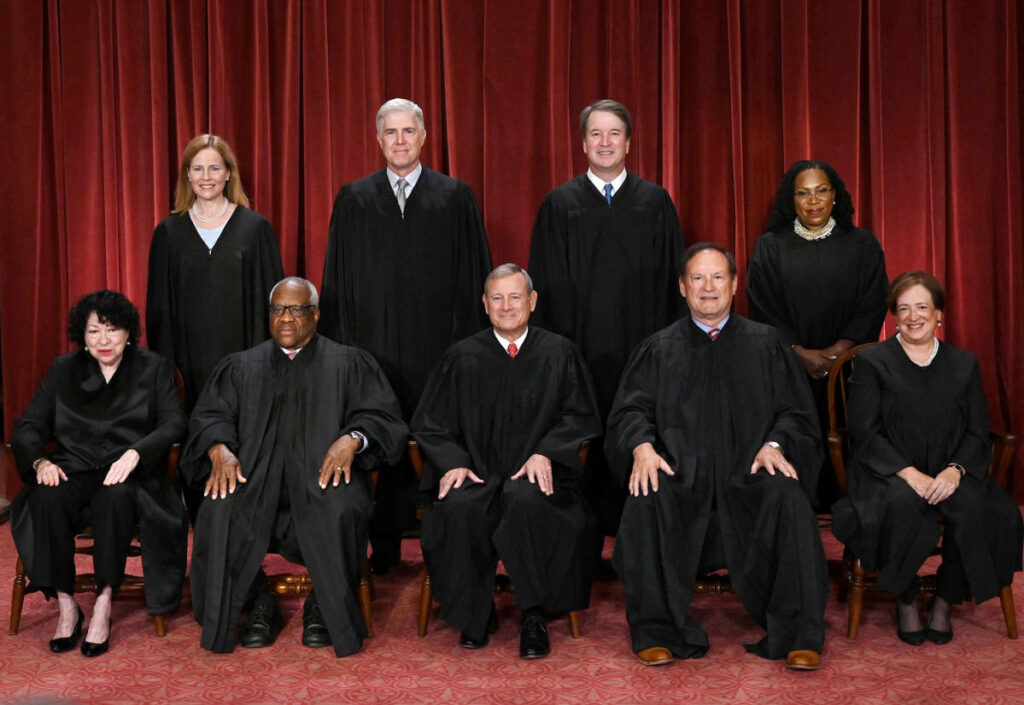As the Republicans prepare for another term with President Donald Trump, their focus remains on reshaping the judiciary, particularly the Supreme Court. In the first term, Trump successfully nominated three justices—Neil Gorsuch, Brett Kavanaugh, and Amy Coney Barrett—who played pivotal roles in overturning longstanding precedents, including abortion rights. With the Republicans securing at least 52 Senate seats after recent elections, they anticipate the possibility of confirming additional conservative justices. This positions the GOP to potentially extend their influence over the Supreme Court further by possibly filling seats vacated due to retirements, with particular attention on justices like Samuel Alito.
Justice Samuel Alito, who has signaled he may retire in the near future, is among the oldest justices on the bench, and speculation surrounds his potential departure. The two frontrunners for the Senate majority leader role, John Thune and John Cornyn, have both emphasized the urgency of confirming judicial nominees as a key priority. Cornyn highlighted that confirming judges would align with other critical legislative priorities, reinforcing the party’s commitment to a conservative judiciary. Furthermore, the potential for more Supreme Court vacancies heightens the urgency among Republicans, particularly with Justices Clarence Thomas and Alito nearing significant ages.
The prospect of Trump securing a majority on the Supreme Court is historically significant, as it would mark a major milestone in judicial history, making him the first president since Franklin D. Roosevelt to do so. With a 6-3 conservative majority already in place, Trump’s judicial picks have not only influenced abortion rights but have also facilitated several rulings against Democratic initiatives. The expectation is that Trump will seek bold nominees who resonate with his administration’s legal philosophy and who may exhibit a firmer conservative stance than prior appointees.
In terms of potential nominees, Trump’s previous administration has produced a roster of judges already in lower courts from which he could draw future Supreme Court appointees. Legal experts suggest that candidates from this pool may exhibit a track record of conservative rulings, increasing the likelihood of appointments aligned with Trump’s judicial vision. As Trump prepares to take office again, he faces a landscape with numerous judges eligible for retirement, creating a scenario ripe for appointing justices who can be expected to align closely with his governance.
Amid the potential shift in the judiciary, Democrats are bracing for the implications of possible retirements, particularly concerning Justice Sonia Sotomayor, who has faced calls from within her party to consider stepping down to ensure a liberal successor. The fear of repeating what occurred with Justice Ruth Bader Ginsburg’s untimely passing during Trump’s earlier administration adds urgency to discussions surrounding Sotomayor’s future on the court. The Democratic party grapples with the potential scenarios that may arise in a lame-duck session if Sotomayor opts to retire, considering the implications for confirming a replacement.
The Republican focus on judicial appointments also includes a move towards consolidating their gains and advancing their agenda without opposition. Senate Republicans, particularly influential figures like Chuck Grassley, are positioned to lead the charge in judicial confirmations, which some believe will occur without the same level of scrutiny faced by previous appointments. Despite Democratic concerns regarding judicial ethics and the integrity of the Supreme Court, any attempts to introduce reforms are likely to stall under a Republican majority. This environment sets a trajectory for the judiciary heavily influenced by conservative ideologies, as both parties prepare for the impending power dynamics following the elections.

